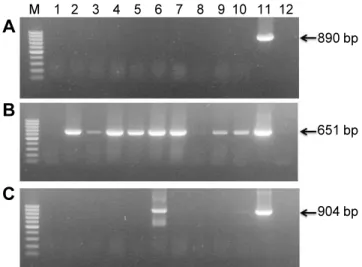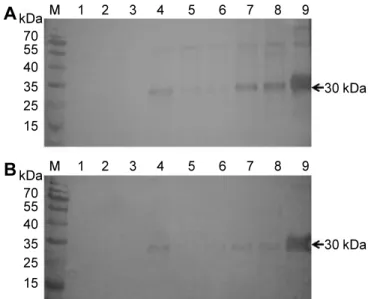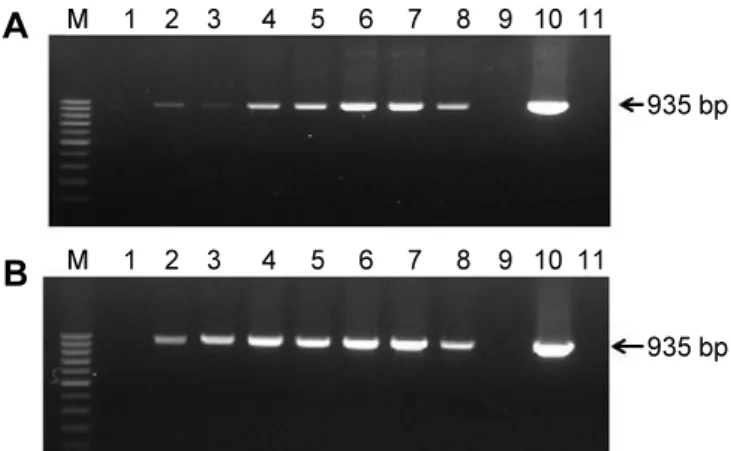Research Report
Expression of Lily mottle virus Coat Protein and Preparation of IgY Antibody against the Recombinant Coat Protein
Ha Na Yoo and Yong-Tae Jung
*Department of Microbiology, Dankook University, Cheonan 330-714, Korea
Abstract: Lily symptomless virus (LSV), Lily mottle virus (LMoV), and Cucumber mosaic virus (CMV) are the most prevalent viruses infecting lilies in Korea. Leaf and bulb samples showing characteristic symptoms of virus infection were collected in 2012, and 80 field samples were analyzed by reverse transcription polymerase chain reaction (RT-PCR). The infection frequencies were 79% for LMoV, 5% for LSV, and 3% for CMV. The LMoV coat protein gene was amplified and cloned into the pET21d(+) expression vector to develop serological diagnostic tools to detect LMoV. The resulting carboxy-terminal His-tagged coat proteins were expressed in Escherichia coli strain BL21 (DE3) by induction with IPTG. The recombinant proteins were purified using Ni-NTA agarose beads and used as an antigen to produce polyclonal antibodies in laying hens. The resulting egg yolk immunoglobulin (IgY) specifically recognized LMoV from infected plant tissues in immunoblotting assays and had comparable sensitivity to that of a mammalian antibody. In addition, method of immunocapture RT-PCR using this IgY was developed for sensitive, efficient, and rapid detection of LMoV. Based on these results, large-scale bulb tests and detection of LMoV in epidemiological studies can be performed routinely using this IgY. This is the first report of production of a polyclonal IgY against a plant virus and its use for diagnosis.
Additional key words:
egg yolk immunoglobulin, IC-RT-PCR*Corresponding author: yjung@dankook.ac.kr
※ Received 22 October 2013; Revised 20 March 2014; Accepted 2 April 2014. This study was supported by the Center for Research and Development of Lilium, Ministry for Food, Agriculture, Forestry, and Fisheries, Republic of Korea.
Ⓒ 2014 Korean Society for Horticultural Science



